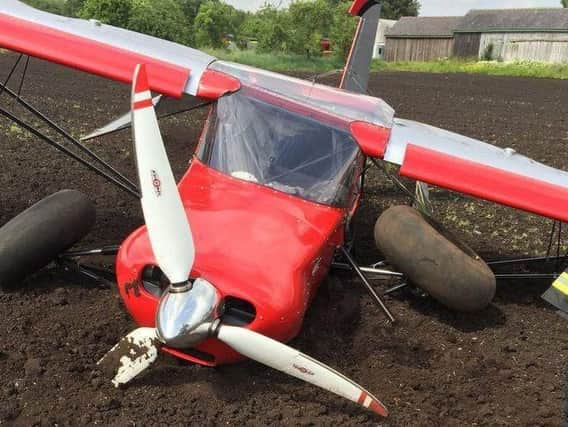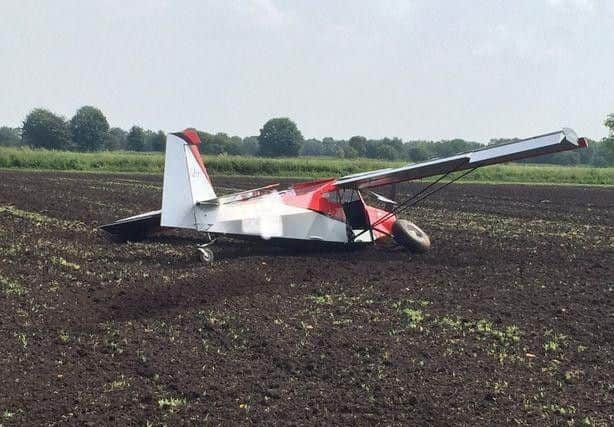Wigan man's plane crashed after engine failure


A test pilot suffered serious head and neck injuries while 61-year-old owner Paul Price, from Ashton, escaped comparatively unscathed when the plane came down on farmer’s fields having only just left nearby Barton Aerodrome.
The Just SuperStol XL was being given a run-out by Mr Price at the controls and the test pilot as passenger prior to the issuing of a permit to fly when it got into difficulty last June.
Advertisement
Hide AdAdvertisement
Hide AdAn Air Accident Investigation Branch report lays blame for the engine failure on fuel vaporization caused by high temperature in the engine compartment.


It says that the white, red and black, aircraft took off on the afternoon of June 10 last year for the test flight and when it reached about 500ft a warning indicated that the exhaust gas temperature indicated excessively hot.
The report adds: “The engine’s throttle was retarded, the aircraft turned right onto the cross-wind leg and levelled at about 800ft.
“The engine then gradually lost power, failing shortly thereafter.
Advertisement
Hide AdAdvertisement
Hide Ad“The owner flew the aircraft in a right turn away from an area of woodland, with the aim of performing a forced landing in an adjacent ploughed field.
“The testing pilot then took control at about 200ft to perform the landing.
“The aircraft landed heavily, with right bank applied, and no flaps extended, resulting in the aircraft’s landing gear collapsing and the aircraft coming to rest on its underside.
“The testing pilot suffered serious injuries and the owner minor injuries, but they were able to extract themselves from the aircraft without assistance. The testing pilot was taken to hospital in an ambulance.”
Advertisement
Hide AdAdvertisement
Hide AdThe report says that as a result of tests carried out after the crash the manufacturers of the aircraft considered that “the engine failure was likely to have been caused by fuel vaporisation, due to high engine compartment temperatures resulting in a ‘vapour lock’.”
It concludes: “If fuel turns to vapour in the aircraft fuel system, large bubbles can form at high points within the fuel system, or in a constriction in the fuel pipe, which can prevent the passage of fuel to the engine.
“This phenomenon is known as ‘vapour lock’ and the effect can be a ‘dead-cut’ of the engine.”
The North West Air Ambulance attended the scene of the crash landing at Chat Moss along with the Hazardous Area Response Team, but neither was needed.
The Airfield Fire Service and local emergency services attended the location of the landing and secured the scene.